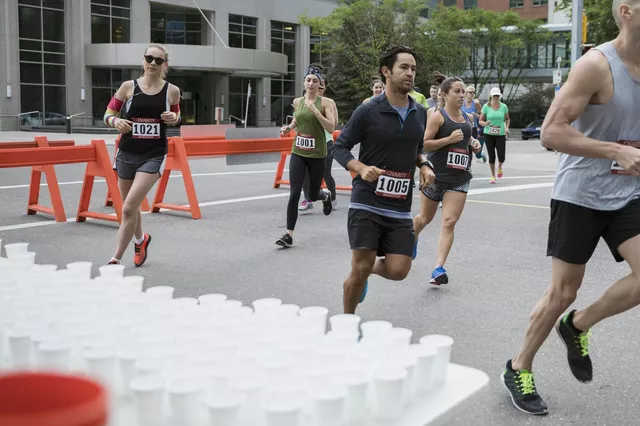Understanding High Blood Pressure
Before we delve into whether or not high blood pressure patients can jog or run, it's essential to understand what exactly high blood pressure is. Also known as hypertension, high blood pressure is a medical condition where the force of blood against your artery walls is consistently too high. This prolonged pressure can eventually lead to health issues, such as heart disease. The scary thing about high blood pressure is that it often goes unnoticed because it typically has no signs or symptoms. That's why hypertension is often referred to as the "silent killer".
High blood pressure can be caused by a variety of factors, including age, ethnicity, family history, obesity, physical inactivity, tobacco use, excessive salt intake, and stress. Apart from these risk factors, certain chronic conditions, such as kidney disease, diabetes, and sleep apnea, can also contribute to high blood pressure. The key to managing high blood pressure lies in controlling these risk factors, which often requires lifestyle changes and, in some cases, medication.
The Impact of Exercise on Blood Pressure
Exercise plays a crucial role in maintaining a healthy blood pressure level. Regular physical activity makes your heart stronger. A stronger heart can pump more blood with less effort, which decreases the force on your arteries, hence reducing your blood pressure. Exercise also helps in managing weight, another significant contributor to high blood pressure. All in all, exercise is a powerful tool to combat high blood pressure.
However, it's important to note that not all exercises are suitable for everyone, especially for those with medical conditions like hypertension. The type, intensity, and duration of exercise should be tailored to the individual's health status, fitness levels, and personal preferences. While some exercises can be beneficial for high blood pressure patients, others may pose risks. That brings us to the question at hand: can high blood pressure patients jog or run?
Jogging and High Blood Pressure
Jogging is a moderate-intensity aerobic exercise that can be beneficial for high blood pressure patients. According to the American Heart Association, moderate-intensity aerobic exercise, such as jogging, for at least 150 minutes per week or vigorous aerobic exercise for 75 minutes per week, can help lower blood pressure. Jogging can increase your heart rate, improve circulation, reduce stress, and help manage your weight, all of which can contribute to lower blood pressure.
However, it's crucial for high blood pressure patients to start slowly and gradually increase the intensity and duration of their jogging sessions. It's also important to monitor your blood pressure and heart rate during exercise. If you feel dizzy, lightheaded, or experience chest pain while jogging, stop immediately and seek medical help. Remember, it's always best to consult with your doctor before starting a new exercise routine.
Running and High Blood Pressure
Running is a high-intensity exercise that can also be beneficial for high blood pressure patients. Like jogging, running can strengthen the heart, improve circulation, reduce stress, and manage weight. However, because running is more intense, it poses more risks than jogging, especially for those with uncontrolled high blood pressure.
If you have high blood pressure and want to start running, it's crucial to talk to your doctor first. They can assess your condition and guide you on how to start running safely. It's also important to start slowly, listen to your body, and stop if you experience any discomfort or adverse symptoms. Monitoring your blood pressure and heart rate during and after exercise is also crucial.
Precautions and Tips for Safe Exercise
Whether you decide to jog or run, safety should always be your top priority. If you have high blood pressure, it's crucial to take certain precautions while exercising. Always warm up before starting your exercise and cool down afterward. This can help prevent sudden changes in your blood pressure.
Moreover, don't hold your breath while exercising as it can spike your blood pressure. Instead, breathe freely and naturally. Stay hydrated and wear comfortable clothing and shoes. Most importantly, listen to your body. If you feel any discomfort, pain, or other adverse symptoms, stop exercising immediately and seek medical help.
Remember, while exercise can help manage high blood pressure, it's not a substitute for a healthy diet, medication, and regular check-ups. Always work with your healthcare provider to create a comprehensive and personalized plan to manage your high blood pressure.




